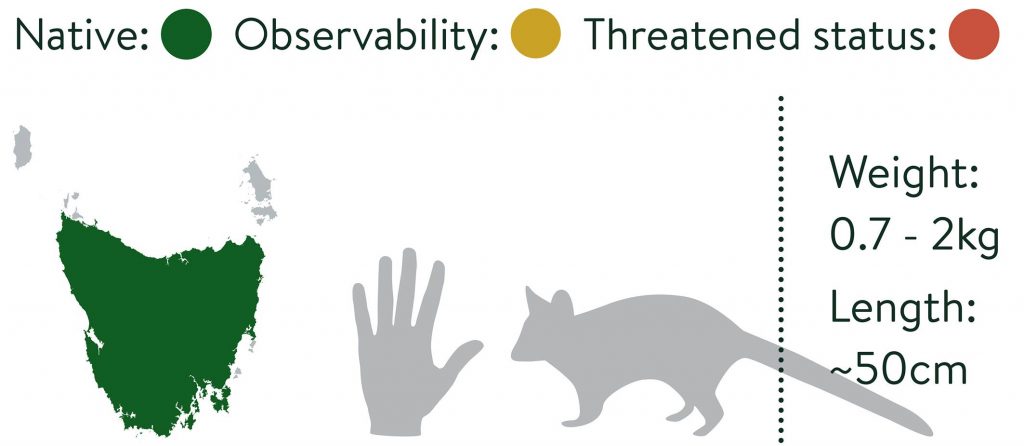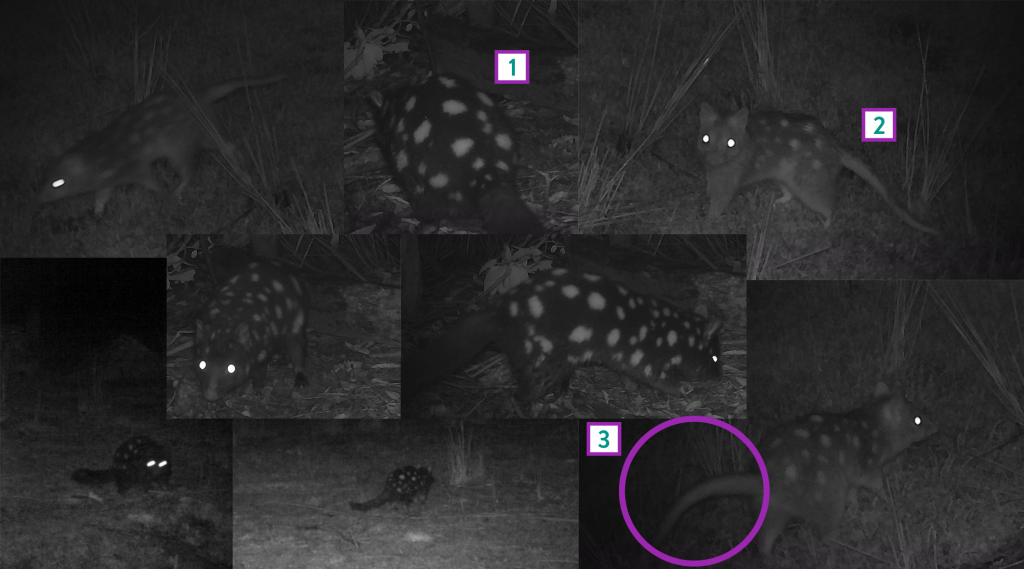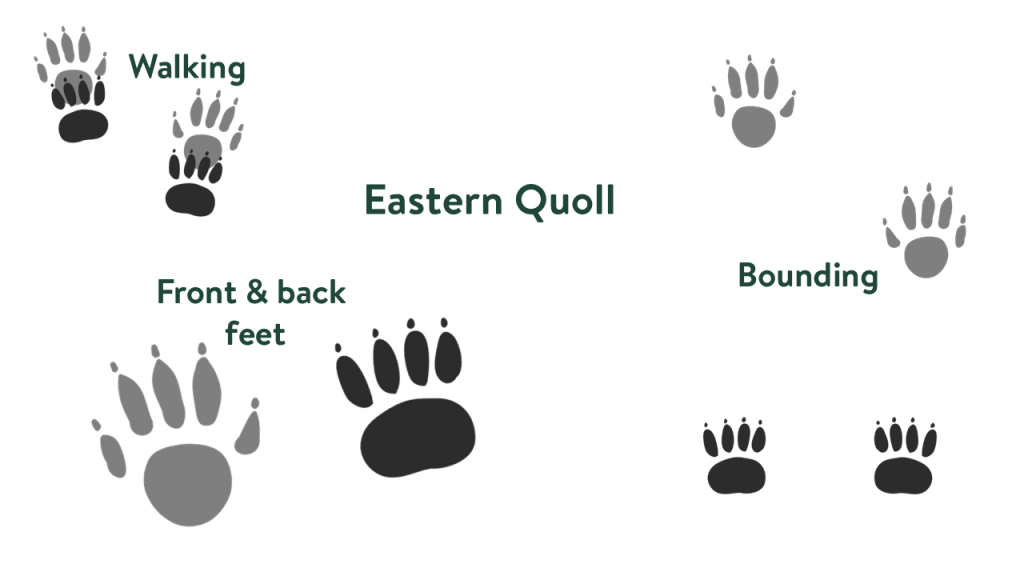Dasyuridae | Dasyurus viverrinus
Eastern quolls are likely extinct on mainland Australia, except for within predator-free fenced areas, and are in population decline in some parts of Tasmania. They come in two colour morphs — fawn and black — both adorned with vivid white spots.

Lifestyle
Easterns are mostly nocturnal and solitary, although their home ranges often overlap. For daytime shelter, they use various den sites, including hollows in logs, spaces beneath rocks, underground burrows, and dense thickets of vegetation (including gorse). While females may share their dens with other quolls, males are less accommodating. Home range sizes vary widely, ranging from 30 to 370 hectares, influenced by a range of environmental factors including rainfall.
Females are capable of raising up to six joeys at a time, corresponding to the number of teats available. Most births occur between May and July, with young becoming independent around November. These young quolls are themselves capable of breeding in the very next breeding season after their birth.

Key identifying features
Small cat-like body. Coat colour may be black (1) or fawn (tan, 2) with white spots over the body. Fawn coloured quolls have a grey-white underbelly. Tail has no spots (3), is shorter than the body and can be bushy. Large ears and eyes. Pointed muzzle with pink nose.
Similar species
Spotted-tailed quoll – larger but more sleek body; spots on the tail; smaller, rounded ears; golden-brown coat.
Habitats
Eastern quolls are less woodland dependent than spotted-tailed quolls, preferring to forage in native grasslands, alpine heath and agricultural pastures. However, they do use neighbouring forest and woodland habitats for shelter. They are more common in dry environments.
Diet
An opportunistic carnivore, the Eastern quoll primarily forages for invertebrates such as cockchafer beetles and corbie grubs in open pastures and grasslands. Additionally, they hunt various prey including rats, birds, rabbits, rodents, small snakes, and skinks. Carrion is also scavenged as part of their diverse diet.
Threats
Juvenile Eastern quolls are at risk of predation by feral cats. There’s also the potential for infection by the cat-borne parasite, Toxoplasma gondii. Habitat clearance, including the removal of fallen wood & rock piles, poses a significant threat as are declines in insect prey due to climate change and insecticide use. Like many other Tasmanian carnviores, Eastern quolls are susceptible to road collisions while scavenging roadkill.

